Back on October 4th 2006 we celebrated the 70th anniversary of the Battle of Cable St. Then there were still quite a few people present who had their own memories of the day people from the East End fought police and fascist marchers, stopping them from marching.
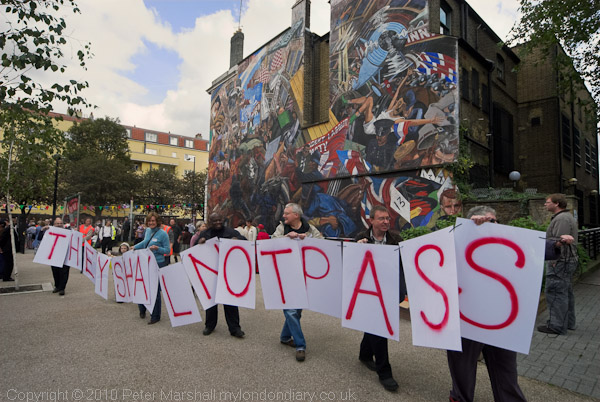
In my account of the event I wrote (capitalisation added):
The man standing next to me quietly said “I was there” and later told me a little of the event and his life. It was the story of a typical East-ender of the era, 13 when it happened. His parents had arrived from Poland in 1912 and settled close to Cable Street, later moving to Brick Lane. Despite being Jewish he had gone to the Methodist Mission just down Cable Street and paid his penny to watch films of a Friday night. And like the rest of his friends, he went with the crowds to stop the fascists. Later, in uniform, he was a part of the army which went to europe to finish off the job in 1944, getting married shortly before he left. Still married after 62 years, he now lives with his wife in north London.
My London Diary – October 2006
You can read the story of one of the women who was there in 1936, Beattie Orwell in a long post on Spitalfields Life, published in 2018 when she was 100.
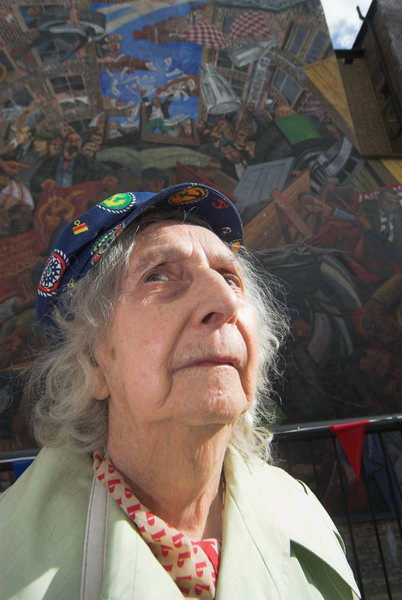
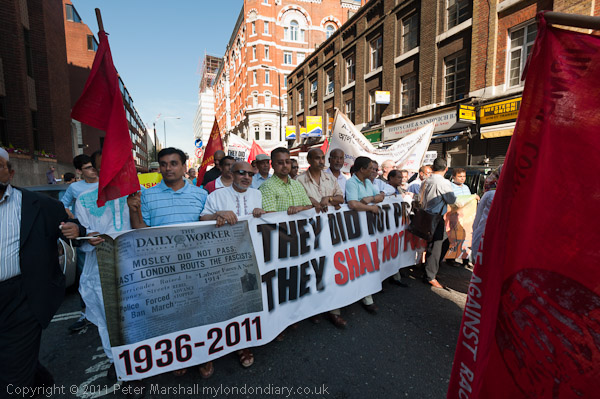
Max Levitas (1915-2018), perhaps the best-known of the Cable St veterans, and a life-long communist activist and antifascist fighter in the East End, led the march on the 75th anniversary in 2011 and made a powerful speech at the rally.
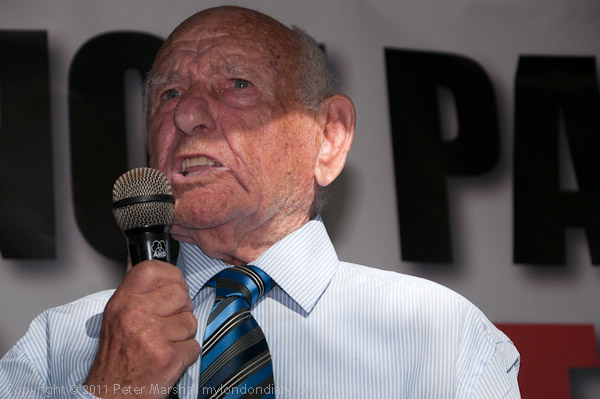
2016 was the 80th anniversary and was again marked by a larger than usual event, beginning with a well-attended rally in Altab Ali Park before marching to Cable St.
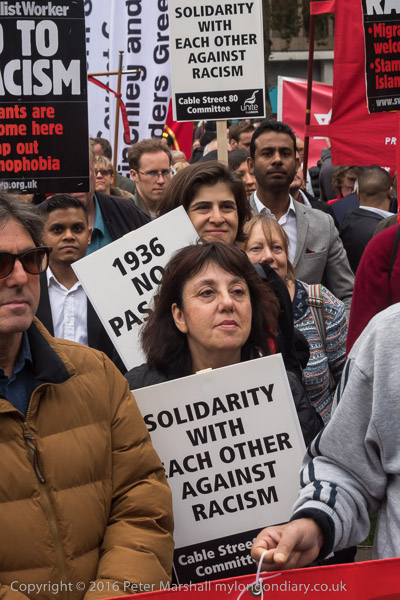
The march was attended by a very wide range of groups, reflecting the people who had come out onto the streets in 1936. Again on My London Diary I wrote:
It was the community that came out onto the streets. People from the mainly Jewish areas of the East End, trade unionists, communist rank and file and Irish dock workers. Men and women in a grass roots movement opposed to Mosley, people who knew that they would be the victims if he came to power. And of course the battle was not against Mosley, but against the police.
Of course there were communists and socialists among those who came out on the streets, and some who played a leading role. But it was essentially a victory for the working class left, for the anarchists and for many without political affiliations who came together spontaneously to defend their place and their people.
My London Diary – October 2016
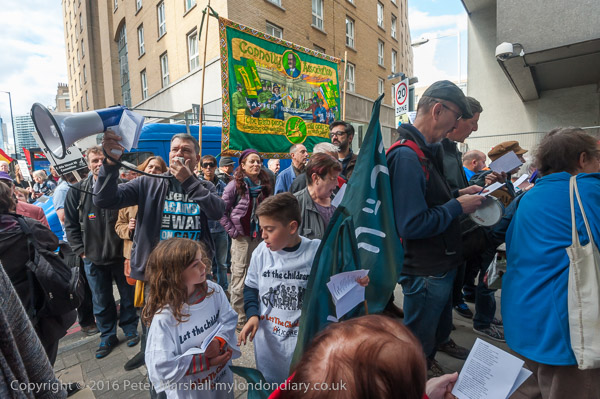
Back in 1936 the Labour Party had urged people to stay away from the protest and go instead to Hyde Park, and even the Communist Party had opposed trying to stop Mosley until they saw that the fight was inevitable.
The march rather reflected this official caution, with marchers being told to keep to the pavement rather than march on the road. It was left to the anarchists and some of the more militant left to give a more authentic celebration of the event when they remained in front of the mural when the others left for the official rally at the end of the march.
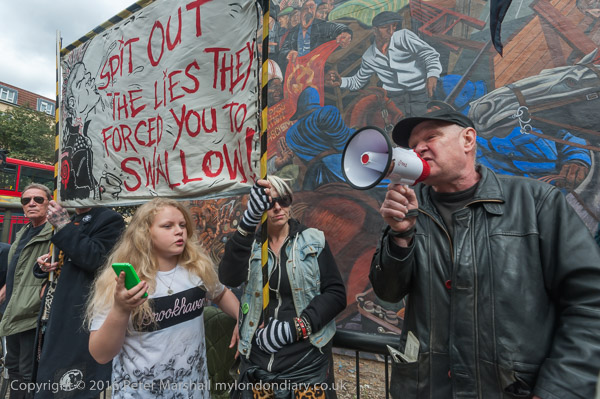
Class War began their own rally, with Martin Wright as the only speaker giving a detailed account of the events of 1936 and their continuing significance, but this was interrupted when Italian communists and anti-fascist groups began their own very noisy performance with chants and flares.
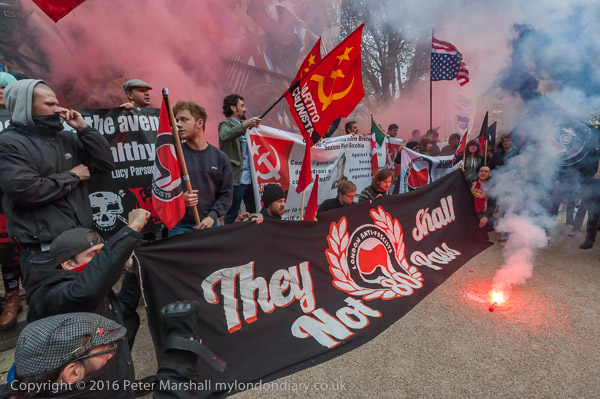
Many more pictures from these events online at My London Diary:
Battle of Cable St 70th Anniversary 2016
Battle of Cable St – 75 Years 2011
Battle of Cable Street 80 Rally 2016
Battle of Cable Street 80 March 2016
Black bloc rally at the Cable St Mural 2016
All photographs on this and my other sites, unless otherwise stated, are taken by and copyright of Peter Marshall, and are available for reproduction or can be bought as prints.